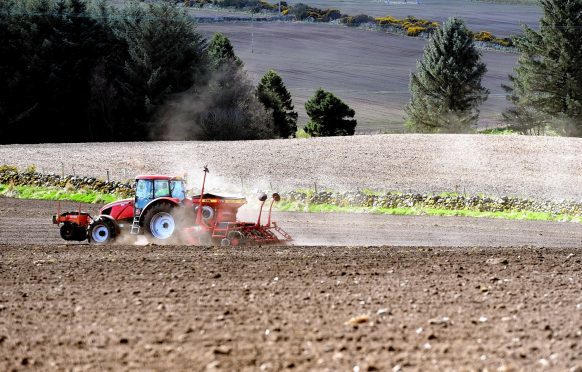The most recent buzz-phrase to grip the rural chattering classes – particularly those of us who like to make a loud noise in the farming glossies or social media – is “regenerative agriculture”.
Like many trends, this nomenclature seems to have a polarising effect; not in terms of the wrongs and rights or the hows and whys but more around people’s facial expression at its mere mention.
I would say 50% of farmers light up and then wax lyrical, while the other 50% look completely blank. At least half of farmers don’t understand or connect with the terminology, but I would guess that – especially in Scotland – a large chunk of those farmers are actually farming in a regenerative way, without rushing off to buy the T-Shirt.
So, where do we start? Well to my mind, regenerative agriculture could probably also wear the label “proper farming”.
This is the sort of mixed farming practised throughout large swathes of Scotland, for generations, with the crops and soils essentially being fuelled by livestock kept on the same holding.
Unfortunately, many purely arable units lost their livestock connection years back and became reliant on bagged fertilisers to maintain yields, with very little done to nourish the soil and its flora, fauna and critical carbon storage capacity.
In recent years, certainly in the 20 years since I co-founded SoilEssentials, there has been a huge swing back towards looking after soil health as a means to sustain cropping.
Again, this work – muck for straw, minimum tillage, spreading of composts etc – could all be now classified as regenerative agriculture, but at the time was simply labelled “best practice”, or as I would again suggest, proper farming.
Over the past four or five years in particular, many farms have begun experimenting, largely with success, in the growing of cover crops to protect soils in between cash crops and provide a green manure to feed the soil.
It seems to be this trend which is responsible for bringing regenerative agriculture to the fore. However, I would urge readers not to think of the term as only applicable to those who grow cover crops and instead, much more in terms of the boxes that they already tick in terms of manures, soil sampling, soil health etc.
This is important as, I feel, as an industry we should all do more to embrace and promote our regenerative agriculture credentials. The general public – fuelled by scare stories of hedgerow removal, agri-chemicals and “intensive farming” in general, are unlikely to engage with the term proper farming.
However, regenerative agriculture gives us a new public/wildlife/carbon/health/eco-friendly badge to wear which I believe could be a very powerful marketing tool for Scottish Agriculture PLC.
Wouldn’t it be great, therefore, if encouragement and reward for regenerative agriculture was further up the Scottish Government agenda when it comes to support schemes in the post-Common Agricultural Policy (Cap) world?
I believe we need to see support schemes aimed at rewarding those farmers already engaged in aspects of regenerative agriculture and encouraging others to come on board.
For example, I would like to see schemes move away from encouraging fallow, which let’s face it implies bare ground, to green cover which would essentially mean cover cropping and in turn ensure living roots capturing carbon and feeding the soil.
Farming is one of the few sectors of the economy readily able to capture carbon, as opposed to simply cut emissions as per other industries.
An understanding that regenerative agriculture is not just for those we read about in the farming press but is actually something that many of us already practise is, I believe, the first step to ensure that we achieve our net-zero goals as an industry.
That goal, and the journey is a powerful marketing tool for farming which I believe can win the imagination and hearts of consumers.
Go and buy your “Regenerative Agriculture – we’ve been doing it for generations!” T-shirt and wear it with pride.
- Robert Ramsay is a farmer and director of Angus-based SoilEssentials.
